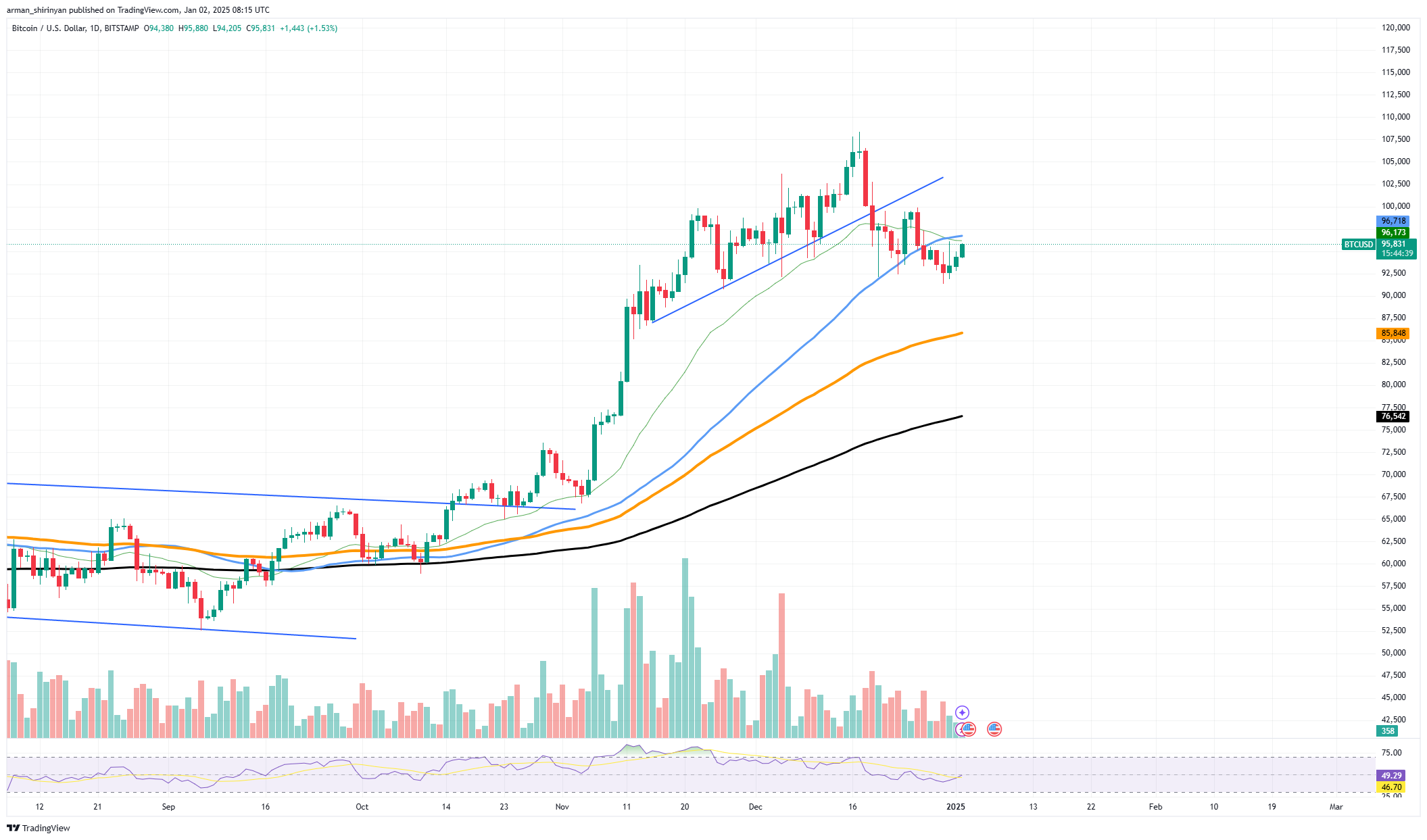
Since its peak in November, Bitcoin\'s trading volume has drastically decreased with current volume levels falling by about 97%. Bitcoin has seen a slight increase in price, moving closer to the $96,000 mark in spite of this steep drop. This paradox draws attention to the special dynamics at work in the contemporary market.
Reduced liquidity is usually indicated by low trading volume, which implies a lack of participation from institutional and retail investors. Although there may occasionally be erratic price swings as a result, the calm market activity has made it easier for Bitcoin\'s price to rise. Therefore, the modest upward trend we have seen may be due to more favorable trading conditions where the market is not burdened by as many sell orders.

Bitcoin\'s price has temporarily recovered, but it is still below the 50 EMA, a crucial gauge of market direction. A downward trend is usually indicated by trading below this level, and the bearish outlook could continue unless Bitcoin breaks above the 50 EMA with consistent momentum. The 50 EMA is presently at a critical resistance level for Bitcoin, hovering around the $96,000 mark. The lack of trading volume in the overall market begs the question of whether Bitcoin can sustain its price levels.
Significant price corrections or trend reversals have historically preceded low volume environments. The 100 and 200 EMAs show that $85,000 and $76,500 are the next support levels to keep an eye on if the price is unable to move above the 50 EMA. As of right now, Bitcoin\'s price movements are still erratic, and the decreased volume can be both a benefit and a risk.
A break above this resistance could open the door for additional gains, while a rejection could indicate fresh downward pressure, so investors should keep a careful eye on the $96,000 level. As 2025 approaches, Bitcoin\'s subsequent actions will probably determine the course of the year.
